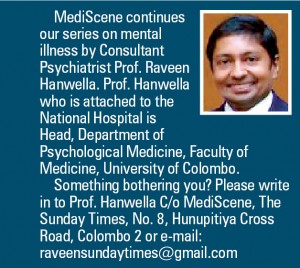Read more when you’re young
Let me now return to the topic that I started with, dementia. Dementia has many causes- the chief one being Alzheimer’s dementia. It has many factors that may cause or lead to activation. Let us look at the landmark research that led to the discovery of these factors.
 The nun study
The nun study
Epidemiologist David Snowden in 1986 started a remarkable study lasting several decades now known as the Nun Study. Snowden at the time was a young researcher looking for a worthwhile study to secure his tenure with a university. He decided to study the effects of ageing on a group of 678 Roman Catholic sisters known as Sisters of Notre Dame. An account of the Nun Study is given in David Snowden’s bestselling book ‘Ageing with Grace’.
Each year the researchers returned to the convent to carry out tests and talk to the nuns. During one of these visits Snowden came across a collection of biographies the sisters were required to write upon entering the order, some more than 50 years earlier. He evaluated the essays based on complexity of grammar and the average number of discrete ideas contained in every ten written words (idea density). He found that those who scored poorly on these two measures were much more likely to develop dementia. Sisters in the lower third sample were 60 times more likely to develop AD than a sister in the upper third.
Can we increase idea density during childhood? Idea density depends on at least two important learned skills, vocabulary and reading comprehension. The best way to increase these skills in children is to read to them and later get them to read a variety of books. We now know that the brain is capable of growth and change throughout life but most of its growth comes during our early years. This is powerfully affected by experience and environment, so this is something we can do to reduce the risk of AD.
Snowden and his team also studied the nun’s emotions and how this might influence their health and longevity. They studied the autobiographies for language style indicating positivity or negativity. Here are two examples, one from a ‘positive nun’ and the other from a not so positive nun. I am sure you can guess which one is which. “I was born on September 26, 1909, the eldest of seven children, five girls and two boys . . . . My candidate year was spent in the Motherhouse, teaching Chemistry and Second Year Latin at Notre Dame Institute. With God’s grace, I intend to do my best for our Order, for the spread of religion and for my personal sanctification.”
 “God started my life off well by bestowing upon me a grace of inestimable value… The past year which I have spent as a candidate studying at Notre Dame College has been a very happy one. Now I look forward with eager joy to receiving the Holy Habit of Our Lady and to a life of union with Love Divine.”
“God started my life off well by bestowing upon me a grace of inestimable value… The past year which I have spent as a candidate studying at Notre Dame College has been a very happy one. Now I look forward with eager joy to receiving the Holy Habit of Our Lady and to a life of union with Love Divine.”
At the time the analysis was done nearly 60 years later 42 percent of the nuns had died. What they found was remarkable. By the age of 80 years only 25% of the positive nuns had died whereas in the not so positive group 60% had died. Of the happy nuns 54% reached the age of 90 while only 15% of the less happy nuns reached that age. Not only did the positive nuns live longer, they had healthier lives as well. We do indeed have a good reason to cultivate the habit of optimism and happiness.
As mentioned earlier Alzheimer identified two primary lesions in the brain of his patient. They are called plaques and tangles. The tangles are found inside the nerve cell and appear as tadpole like structures in a microscopic slide when stained with a special silver stain. It consists of a protein called tau which helps form rope like structures called microtubules. The microtubules are essential for communication between nerve cells. In AD the tau protein is abnormal and tangles the microtubules disrupting communication and ultimately the nerve cells die.
The Nun Study has also shed light on how the second commonest cause of dementia called vascular dementia (VD) or multi infarct dementia interacts with AD. Previously it was thought that vascular dementia and AD were existed separately. Examining the brains of the nuns who had died showed that a third had a mixture of VD and AD. It also found that nuns who had the changes of AD in their brains were less likely to show signs of dementia if their brains were stroke free. It means that stroke free brains can compensate for the changes of AD and reduce the symptoms of the disease.
This is an important finding. We may not have a definite treatment for AD but we certainly know of ways to reduce strokes. High blood pressure is the leading cause of stroke. Medication to reduce blood pressure can significantly reduce the risk of stroke. Diabetes and increased cholesterol are other important risk factors for stroke. A diet rich in vegetables and fruits and low in fats combined with exercise and weight loss will control diabetes and help reduce the risk of strokes. Smoking is another important cause of stroke. Reducing the risk of dementia is another reason for stopping smoking.
It is also important for people to know the symptoms of stroke. They include, numbness or weakness in one side of the body, difficulty in speaking, memory loss, dizziness or difficulty in walking and severe headache. Sometimes these resolve within a few hours but could be the result of a mini stroke or TIA (transient ischaemic attack). It is important to seek medical advice as a TIA could be the precursor to a major stroke. Even in a major stroke the first few hours are critical as the reduced blood supply to the brain leads to death of nerve cells and permanent disability unless the circulation is restored quickly.



